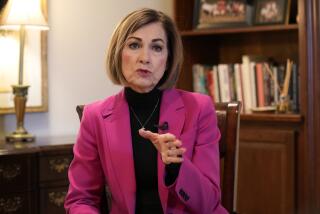Bank of England to keep stimulus until unemployment drops to 7%
WASHINGTON -- The Bank of England on Wednesday said it would maintain its stimulus program until the unemployment rate falls to 7%, following the same strategy as the U.S. Federal Reserve in providing an explicit target for when it would raise interest rates.
The unemployment rate in Britain is 7.8% and is not forecast to drop to 7% for at least two years.
The unemployment rate would need to fall to 7% before the bank’s Monetary Policy Committee would consider raising its short-term interest rate from 0.5% and halting its bond-buying program, said Mark Carney, who took over as head of the British central bank last month.
QUIZ: How well do you understand the Fed stimulus?
He said the bank could have used several different indicators as a threshold to consider scaling back the stimulus, but decided the unemployment rate gave the best overall view of the nation’s economic situation.
“We landed on unemployment not because it’s a target…but because it is the best summary indicator that gives a sense of the conditions in the economy at which the MPC would begin to consider the possible withdrawal of the exceptional monetary policy stimulus that’s currently in place,” he said at a London news conference.
Although the bank upgraded its economic forecast, Carney said, “we’re not at escape velocity right now.”
Howard Archer, chief economist for Europe and Britain at IHS Global Insight, said the bank’s forward guidance was important as economic growth is picking up.
“With the economy currently showing marked, widespread improvement and polls suggesting that consumers suspect that interest rates will start rising within a year, the Bank of England is very keen to reassure businesses and consumers that interest rates will be unchanged for an extended period to come,” Archer said.
Like the Fed and other central banks around the world, the Bank of England has taken dramatic steps to boost economic growth after the financial crisis and Great Recession.
The Fed has said it intends to keep its short-term interest rate near zero as long as the U.S. unemployment rate remains above 6.5%. It was 7.4% in July and the Fed doesn’t forecast it to fall to 6.5% until at least the end of next year.
The Fed also is considering reducing its monthly bond-buying program, which could happen as soon as September.
Fed Chairman Ben S. Bernanke has not given an explicit target for when a reduction in the $85 billion in monthly purchases would begin, but has said he expected the unemployment rate would be 7% when the program ended sometime next year.
ALSO:
Obama backs push to replace Fannie Mae, Freddie Mac
Eminent domain proposal for mortgages gains traction in California
Lawsuit alleges CalPERS misled customers with long-term care plans







